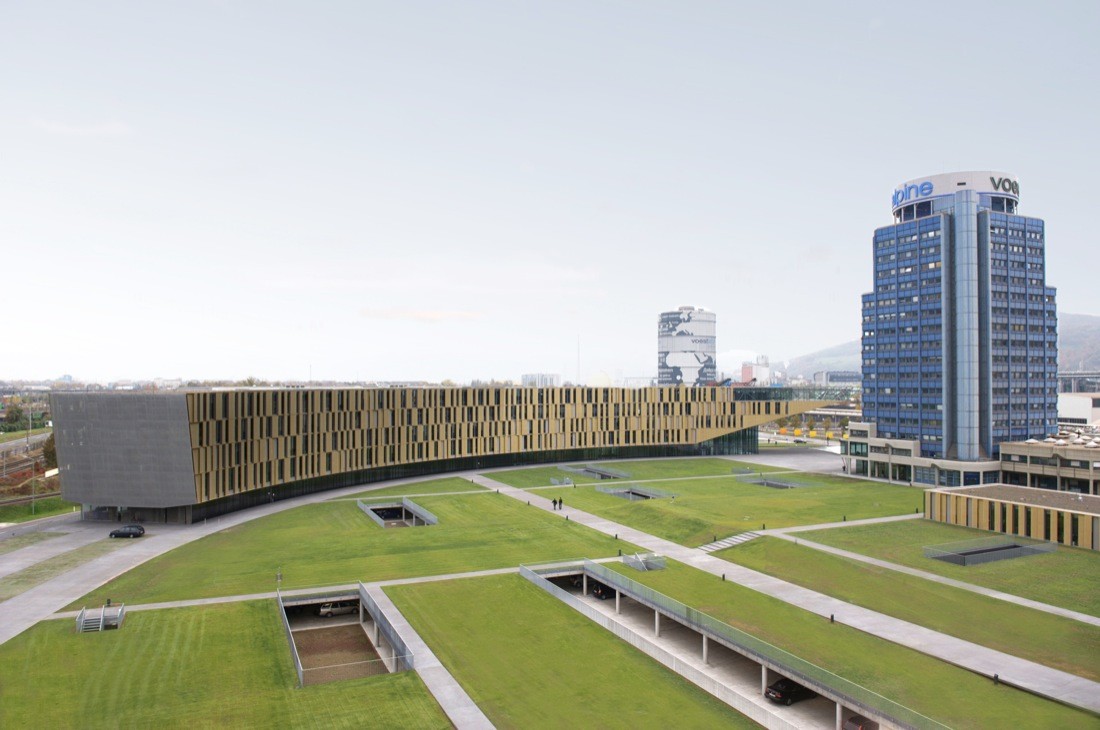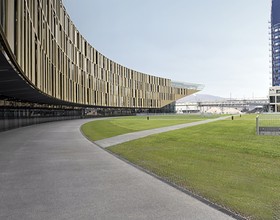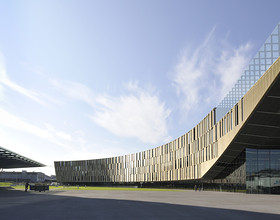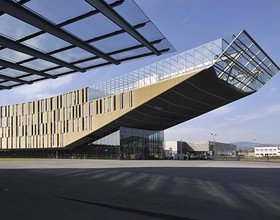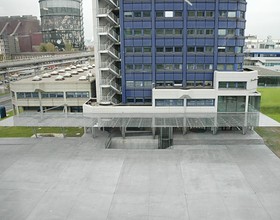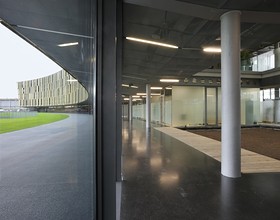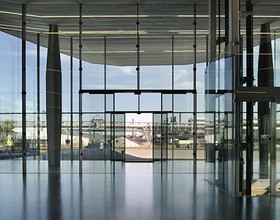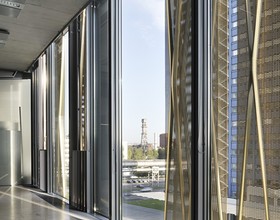VOESTALPINE STAHL OFFICE BUILDING
-
The Voest steelworks in Linz has erected its new, representative sales and finances head office around an extensive open area where the dynamically curved volume, cut at an angle in front, with the filigree, adjustable golden façade makes a strong impact on the close infrastructure.
The project outlines a wasteland area in what is called the “non-core zone” to the north of the company headquarters known as BG41, to create an expansive but yet clearly bordered open space that extends to the visitors centre in the south and it achieves the feat of combining three very different buildings to create a representative whole. The two levels park that is to be created here according to the plans of landscape designers H.Y.L has the potential to become one of the city’s most imposing parks.
Dietmar Feichtinger Architectes rigorously cleared the entire competition site of motor vehicles. The metal desert that even for the Voest which is generally most interested in the use of its own products – no longer seemed to have any advertising appeal is now one level lower and has become a parking garage.
Built of reinforced concrete, flanked on the open edges by planted embankments, naturally cross-ventilated, lit from planted atriums and broken up into almost domestic proportions by glass walls, some transparent, some satin finish, this garage with its light- coloured polished floor continues the business of representation above ground level in a highly skilled way. However the main entrance provides a glazed, seemingly unbounded, foyer that focuses the attention of visitors from the steel reception desk on the one side to the impressive landscape of cranes, waste heaps, and chimneys on the other.
From here a panorama lift takes visitors to the meeting rooms, accessible to a wider public, that are located in this part of the building. In terms of number, size and fittings these rooms respond to the needs and are covered by a terrace on the top floor, surrounded by glass walls and open to the sky, which offers exceptional views. All the rooms on the ground floor, which is clearly shaped as a plinth and has a delicately profiled glass façade, are also reserved for “public” functions such as the company’s own travel agency, an archive, advertising media department and similar. The offices proper are on the four upper floors that are encased in a shimmering golden façade. They are laid out in a strictly linear, double-loaded fashion, but the curve of the building visually reduces the apparent length. The offices lie along a wide centre zone in which four glass roofed atria are incised. Beside each atrium there is a circulation and services core of exposed concrete, between them are the “living rooms” of the departments. The offices are separated from these communication areas by glass walls, satin-finished in places. The relatively narrow subdivision of the façade into full-height opening steel panels and fixed glass elements, also full-height, allows different size offices to be made in accordance with the different requirements. Sliding shade elements of frameless expanded metal on the outside face of the facade and the textile glare protection on the inside ensure agreeable lighting conditions.
Dietmar Feichtinger Architectes display the steel construction – columns and open web beams, as well as the concrete of the ceiling slabs.
Photo credits: Jo Feichtinger, Barbara Feichtinger-Felber, Josef Pausch
1870 Projects

